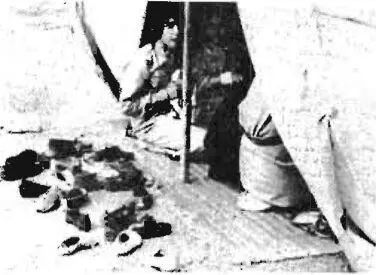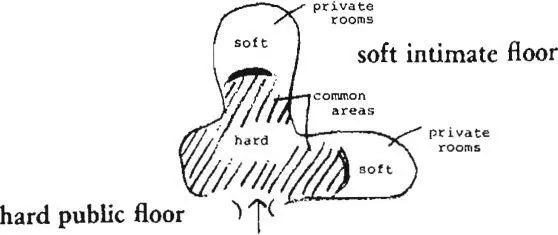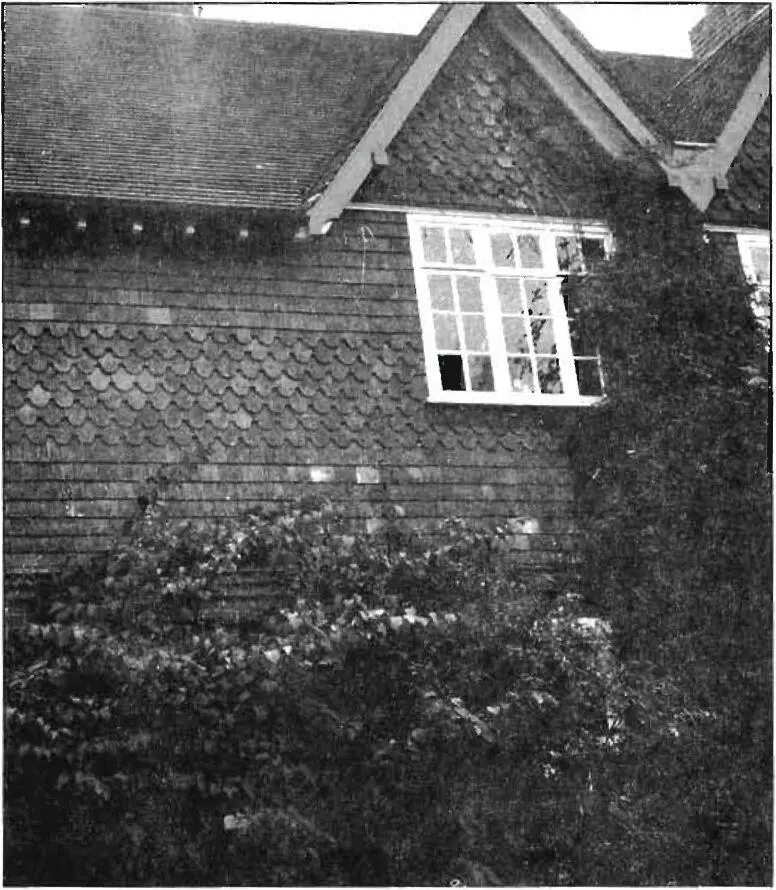Christopher alexander - A pattern language
Здесь есть возможность читать онлайн «Christopher alexander - A pattern language» весь текст электронной книги совершенно бесплатно (целиком полную версию без сокращений). В некоторых случаях можно слушать аудио, скачать через торрент в формате fb2 и присутствует краткое содержание. Жанр: Прочая научная литература, на английском языке. Описание произведения, (предисловие) а так же отзывы посетителей доступны на портале библиотеки ЛибКат.
- Название:A pattern language
- Автор:
- Жанр:
- Год:неизвестен
- ISBN:нет данных
- Рейтинг книги:3 / 5. Голосов: 1
-
Избранное:Добавить в избранное
- Отзывы:
-
Ваша оценка:
- 60
- 1
- 2
- 3
- 4
- 5
A pattern language: краткое содержание, описание и аннотация
Предлагаем к чтению аннотацию, описание, краткое содержание или предисловие (зависит от того, что написал сам автор книги «A pattern language»). Если вы не нашли необходимую информацию о книге — напишите в комментариях, мы постараемся отыскать её.
A pattern language — читать онлайн бесплатно полную книгу (весь текст) целиком
Ниже представлен текст книги, разбитый по страницам. Система сохранения места последней прочитанной страницы, позволяет с удобством читать онлайн бесплатно книгу «A pattern language», без необходимости каждый раз заново искать на чём Вы остановились. Поставьте закладку, и сможете в любой момент перейти на страницу, на которой закончили чтение.
Интервал:
Закладка:
When we look at the problem honestly, we realize that the wooden floor, and the wooden floor with a carpet on it, are both rather uneven compromises. The bare wooden floor is too bare, too hard to be comfortable; but not in fact hard enough to resist wear particularly well if it is left uncovered—it scratches and dents and splinters. And when the floor is covered with a carpet, the whole point of the beauty of the wood is lost. You cannot see it any more, except round the edges of the carpet; and the carpet on the floor is certainly not hard enough to resist any substantial wear. Furthermore, the most beautiful carpets, handmade rugs and tapestries, are so delicate that they cannot take very rough wear. The practice of walking on a Persian rug with outdoor shoes on is a barbarian habit, never practiced by the people who make those rugs, and know how to treat them—they always take their shoes off. But the modern nylon and acrylic rugs, machine-made for hard wear, lose all the sumptuousness and
1089
pleasure of the carpet: they are, as it were, soft kinds of concrete.
The problem cannot be solved. The conflict is fundamental. The problem can only be avoided by making a clear distinction in the house between those areas which have heavy traffic and so need hard wearing surfaces which are easy to clean, and those other areas which have only very light traffic, where people can take off their shoes, and where lush, soft, beautiful rugs, pillows, and tapestries can easily be spread.
Traditional Japanese houses and Russian houses solve the problem in exactly this way: they divide the floor into two zones— serviceable and comfortable. They use very clean, and often precious materials in the comfortable zone, and often make the serviceable zone an extension of the street—that is, dirt, paving, and so on. People take their shoes off, or put them on, when they pass from one zone to the other.
 |
| The threshold between hard and soft. |
We are not sure whether taking shoes off and on could become a natural habit in our culture. But it still makes sense to zone tire house so that the floor material changes as one gets deeper into the house. The pattern intimacy gradient (127) calls for a gradient of public, semi-public, and private rooms. It follows that one wants the floor to get softer as one goes deeper into the house—that is, the entrance and the kitchen are better floored with a hard, serviceable surface, while the dining, family room, and children’s playrooms need a serviceable floor but with comfortable spots, and the bedrooms, studies, rooms of one’s own need soft comfortable floors, on which people can sit, lie, and walk barefoot.
1090
233 FLOOR SURFACE
What should the materials be? Of the hard and soft materials, the hard is more of a problem. Since children are close to these floors, as well as the soft ones, they must be warm to the touch, —and at the same time they must be easy to clean. For these hard floors, a “soft” concrete might work. It can be made serviceable and pleasant at the same time if it is finished off with a lightweight textured floor finish, which is relatively porous. It can be made to wear and repel water by making the color integral with the mix and by waxing and polishing after it is set. It is fairly cheap and makes sense if the floor is a concrete floor anyway. Other materials which would work as hard floors are earth, rubber or cork tile, soft unbaked tile known as pastelleros in Peru—see soft tile and brick (248)—and wood planks, but these materials are more expensive.
For soft materials, carpet is the most satisfactory—for sitting, lying, and being close to the ground. We doubt that an improvement can be made on it—in fact we guess that if a substitute is used instead, it will eventually get carpeted over, anyway. This means that the areas which are going to be carpeted might as well have a cheap subfloor with matting laid wall to wall.
To emphasize the two zones, and to promote the taking off and on of shoes from one zone to the next, we suggest that there be a step up or a step down between the zones. This will help tremendously in keeping each zone “pure,” and it is sure to help the activities in each zone.
Therefore:
Zone the house, or building, into two kinds of zones: public zones, and private or more intimate zones. Use hard materials like waxed, red polished concrete, tiles, or hardwood in the public zones. In the more intimate zone, use an underfloor of soft materials, like felt, cheap nylon carpet, or straw matting, and cover it with cloths, and pillows, and carpets, and tapestries. Make a clearly marked edge between the two—perhaps even a step—so that people can take their shoes off when they pass from the public to the intimate.
 |
| entrance for shoeS |
❖ *J* ❖
On the hard floor, you can use the same floor as you use on outdoor paths and terraces—hand fired brick and tile—soft tile and brick (248). On the soft intimate floors, use materials and cloths that are rich in ornament and color—ornament (249),
WARM COLORS (250). . . .
1092
| 234 LAPPED outside walls |
|---|
 |
1093
. . . this pattern finishes the wall membranes (218), and roof vaults (220). It defines the character of their outside surfaces.
The main function of a building’s outside wall is to keep weather out. It can only do this if the materials are joined in such a way that they cooperate to make impervious joints.
At the same time, the wall must be easy to maintain; and give the people outside some chance of relating to it.
None of these functions can be very well managed by great sheets of impervious material. These sheets, always in the same plane, have tremendous problems at the joints. They require highly complex, sophisticated gaskets and seals, and, in the end, it is these seals and joints which fail.
Consider a variety of natural organisms: trees, fish, animals. Broadly speaking, their outside coats are rough, and made of large numbers of similar but not identical elements. And these elements are placed so that they often overlap: the scales of a fish, the fur of an animal, the crinkling of natural skin, the bark of a tree. All these coats are made to be impervious and easy to repair.
In simple technologies, buildings follow suit. Lapped boards, shingles, hung tiles, thatch, are all examples. Even stone and brick though in one plane, are still in a sense lapped internally to prevent cracks which run all the way through. And all of these walls are made of many small elements, so that individual pieces can be replaced as they are damaged or wear out.
Bear in mind then, as you choose an exterior wall finish, that it should be a material which can be easily lapped against the weather, which is made of elements that are easy to repair locally, and which therefore can be maintained piecemeal, indefinitely. And of course, whatever you choose, make it a surface which invites you to touch it and lean up against it.
In making our filled lightweight concrete structures, we have
1094
Читать дальшеИнтервал:
Закладка:
Похожие книги на «A pattern language»
Представляем Вашему вниманию похожие книги на «A pattern language» списком для выбора. Мы отобрали схожую по названию и смыслу литературу в надежде предоставить читателям больше вариантов отыскать новые, интересные, ещё непрочитанные произведения.
Обсуждение, отзывы о книге «A pattern language» и просто собственные мнения читателей. Оставьте ваши комментарии, напишите, что Вы думаете о произведении, его смысле или главных героях. Укажите что конкретно понравилось, а что нет, и почему Вы так считаете.












